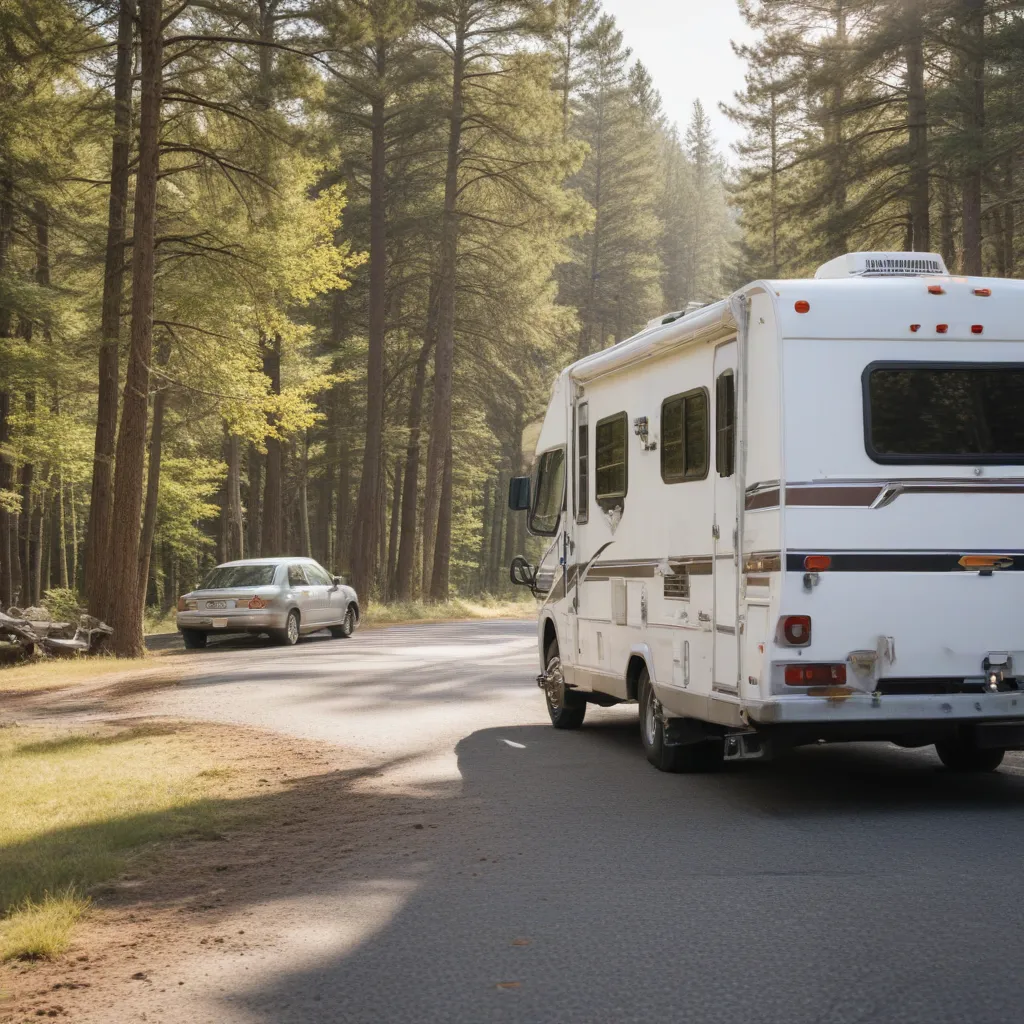
Buckle Up, Folks – It’s Time to Hit the Road!
Picture this: You’ve just snagged the keys to your shiny new RV, and the open road is calling your name. The sun is shining, the breeze is flowing, and you can practically taste the freedom. But before you hit the gas and leave the driveway, let me impart a bit of wisdom – safety should be your number one priority.
As the owner and operator of Orange County RV Repair, I’ve seen it all when it comes to RV mishaps. From blown tires to navigational nightmares, there’s no shortage of ways things can go wrong on the highway. But fear not, my adventurous friends! I’m here to share my top RV driving tips to keep you and your home-on-wheels safe, sound, and stress-free.
Mastering the Basics: RV Driving 101
The Importance of Pre-Trip Inspections
Before you even think about turning the key, it’s crucial to conduct a thorough pre-trip inspection. This isn’t just a box-ticking exercise – it could mean the difference between a smooth journey and a disaster on wheels. I recommend taking the time to carefully check your RV’s tires, brakes, lights, and other essential systems. Trust me, a little due diligence now can save you a world of headaches down the road.
Navigating the Roads: Size Matters
One of the biggest challenges for RV newbies is adjusting to the sheer size and weight of these behemoths on the road. Compared to your everyday sedan, maneuvering an RV takes a whole new level of skill and awareness. You’ll need to be extra vigilant when changing lanes, making turns, and finding suitable parking spots. Remember, your RV is not a compact car – give yourself plenty of room and don’t be afraid to take it slow.
Mastering the Driving Dynamics
Driving an RV is unlike anything you’ve experienced before. The handling, acceleration, and braking are all vastly different from a regular vehicle. Take the time to familiarize yourself with your RV’s unique driving dynamics before hitting the open road. Practice in a safe, uncrowded area to get a feel for how it responds to your inputs. Believe me, you don’t want to be figuring this out for the first time on the highway.
Navigating the Open Road: Tips for Smooth Sailing
Keeping a Keen Eye on Your Mirrors
As an RV driver, your mirrors are your best friends. Constantly scan your side and rearview mirrors to stay aware of your surroundings. Keep an eye out for any potential hazards, like merging vehicles or pedestrians, and be prepared to adjust your speed or position accordingly.
Maintaining a Safe Following Distance
Tailgating is a big no-no when it comes to RV driving. These mammoth vehicles require significantly more stopping distance than your average car. Maintain a safe following distance, usually around 4-5 seconds, to give yourself ample time to react to any sudden changes in traffic.
Mastering the Art of Lane Changes
Changing lanes in an RV is a delicate dance that requires precision and patience. Signal well in advance, check your mirrors and blind spots, and ease into the new lane slowly and steadily. Rushing through lane changes is a surefire way to end up in trouble.
Staying Alert: Strategies for Avoiding Accidents
Conquering Steep Inclines and Declines
Navigating hills and mountains in an RV can be a real challenge. On steep inclines, keep your speed down and use a lower gear to maintain control. On declines, resist the temptation to coast – instead, use your engine braking to keep your speed in check. Remember, gravity is not your friend when you’re piloting a heavy RV.
Dealing with High Winds and Adverse Weather
Mother Nature can be a formidable foe for RV drivers. High winds, heavy rain, and even snowstorms can pose serious risks to your safety. When faced with inclement weather, slow down, increase your following distance, and be extra vigilant in your driving. If conditions become too treacherous, don’t be afraid to pull over and wait it out.
Staying Alert and Avoiding Distractions
Driving an RV requires your full attention at all times. Resist the urge to fiddle with the radio, answer your phone, or engage in other activities that could take your eyes off the road. Stay focused, keep both hands on the wheel, and be ready to react to any unexpected situations.
The Importance of RV Maintenance
Keeping Your Tires in Top Shape
Tires are the unsung heroes of the RV world. They’re the only things connecting your massive home-on-wheels to the asphalt, so it’s crucial to keep them in tip-top shape. Regularly check your tire pressure, inspect for wear and tear, and replace them as needed. A blowout on the highway is every RV owner’s worst nightmare.
Ensuring Proper Braking Performance
Your RV’s brakes are the backbone of your safety system. Make sure they’re regularly serviced and in good working order. If you notice any issues, like spongy pedal feel or unusual noises, don’t hesitate to get them checked out by a professional. Your life (and the lives of others on the road) could depend on it.
Staying on Top of General Maintenance
Just like your car, your RV requires regular maintenance to keep it running smoothly and safely. From oil changes to tune-ups, it’s essential to follow the manufacturer’s recommended service schedule. Neglecting these essential tasks could lead to major (and costly) problems down the road.
Embracing the RV Lifestyle – Safely
At the end of the day, driving an RV should be a thrilling, rewarding experience. By prioritizing safety and staying vigilant, you can enjoy the freedom of the open road without the added stress and anxiety. Remember, a little preparation and attention to detail can go a long way in keeping you and your loved ones safe.
So, what are you waiting for? Grab those keys, double-check your mirrors, and let’s hit the highway! Just remember – safety first, always. Happy (and safe) travels, my friends!
